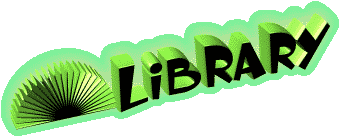 For
developers
For
developers  For
developers
For
developers
Trying to create a translator from VB to NSBasic can not be done without using all the available resources to know the basic language's instructions. To do this there are many ways (books, Microsoft support page, NSbasic pages etc) but the real problem is to quickly find the required information. Sometime a developer can meet problems only because it is difficult to understand how a property or a method works correctly. This happens to me when i was working to the eVaNS project (translation of an eVB form to the equivalent NSBasic form) so i collected all the informations available and created some pages of notes to find quickly what i needed but particularly to check on the fly if an object or property or method etc were supported by both the languages. I resumed this mixed archive now working to VBtraNS (eVB is anyway a subset of VB and this may be anyway a good starting point) and thinking that this may help or interest somebody also i am revising that pages now to post them here as htm pages . What you will find here is a mix of books, web pages about Microsoft VB and eVB compared with NSbasic handlebook and technical notes. Obviously it should be better to check the pages of the owners of the referenced languages that remain the best complete source for these informations but ...... if this may help you to save your time...... THIS IS THE CONTENT OF THE LIBRARY
|
ADDITIONAL
OCX / DLL
|
OTHERS
|
How the matter works ? You can see for each item the following icons:eVB -
NSbasic - used to show if each single item is supported or not. In addition in the item List (Showing Properties, methods, events for each object) you will see the following symbol [* *] or[*] or [*] that will inform you if available by both languages or eVB or NSB only . (be patient if page will require a little more time to load) For each selected item you will find a Sintax sample like the following: Label.[property]=(String) or [Object].caption=(String) where the bold red word is the item you are looking, the word between the bold square bracket identify what you may use with that item, showing this also in the relative paragraph, and the word in the ( ) refer to the variable, values or costant to use that you equally find in the page. The Font properties will be listed separately under Font item as commonly applied to all the objects that support the Font property also. When the archive will be completed will be added also the icons to quickly recognize instructons of third party OCX or Dll and last an icon to identify which objects, events etc are duly supported by my last version of VBtraNS
![]() until
archive will be completed any information may be subject to change
until
archive will be completed any information may be subject to change
TO COMPLETE THE POSTING OF MY NOTES
(I.E translating my note in useful Htm pages) WILL REQUIRE TIME
I CAN ONLY ASSUME TO BE ABLE TO DO THIS ALMOST SOME TIME IN A MONTH
Resources and Disclaimer
The information herein have been collected from VisualBasic 6(i Portatili) book,
eVB Tools 3.0 Help, NSBasic HandBook and any other available technical note
and support page on these subjects.
The comparison has been effected relating to the main characteristics so for more
detailed information check the languages creators official pages. Any programs,
trademarks or whatever herein quoted pertains to their respective owners.
You may consult freely the information herein posted but you may not reproduce
totally or partially, the content for any possible commercial use.
Many of the properties herein quoted have not been directly tested so, even if the
page will be subject to update and maintenance the author will be in any way
liable for missing or wrong results applying the informations shown in this pages.